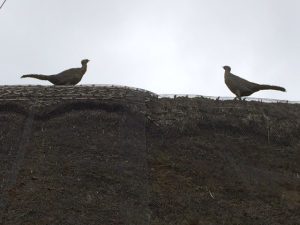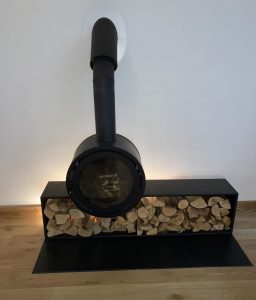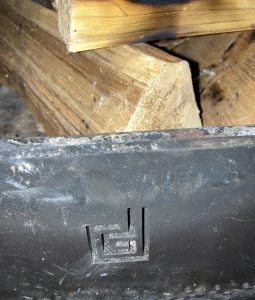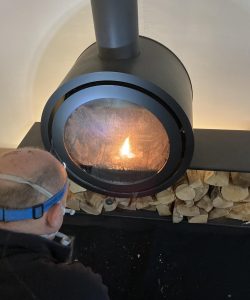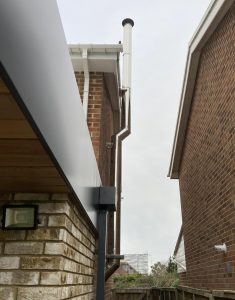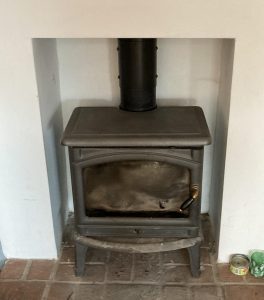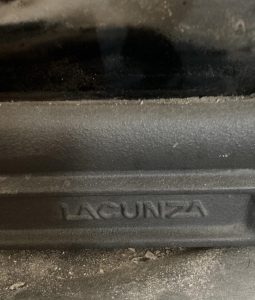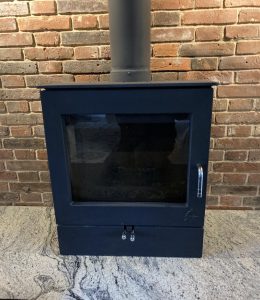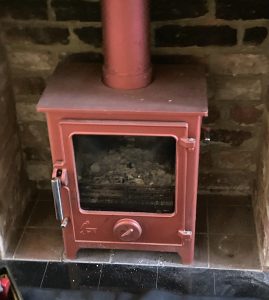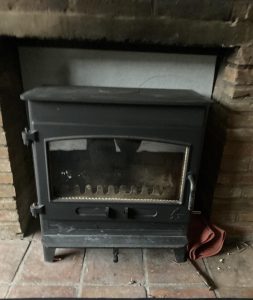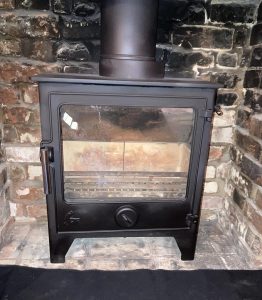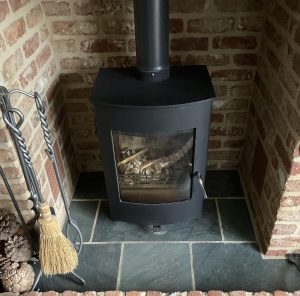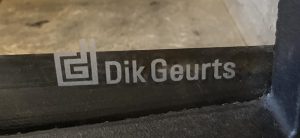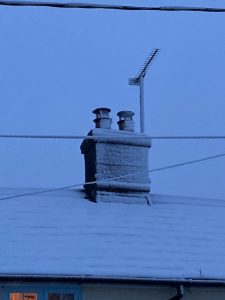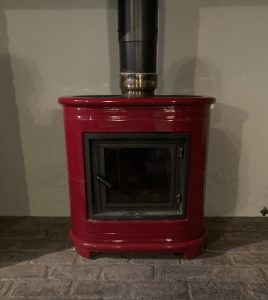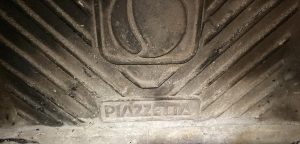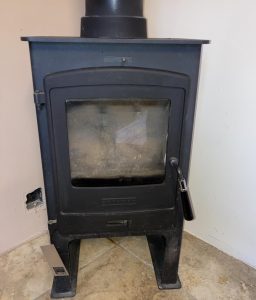
Continuing this week with the theme of unusual or rare stoves, I came across this Portway 1 Multi-Fuel Stove at an address in Thaxted recently. I had actually heard of Portway Stoves previously, but I had never come across on whilst out sweeping, so this places this stove in the category of rare as opposed to unusual. It was a tidy little stove though, and one that the customer is very satisfied with. Despite its diminutive size the customer reports that when it is in operation it pumps out the heat and warms what is a large room more than satisfactorily. The installation also could boast an impressive stainless-steel factory-made chimney with a number of 45 degree turns in it. I swept this using 10mm power sweeping rods.
Portway Stoves are not a local company, they are based up north in Stoke-On-Trent and have a long history dating back to the 1900’s. Portway multifuel and wood burning stoves began in the early 1800’s when the owner of an ironmongery store took inspiration from the very first enclosed metal stoves which first appeared in North America at the end of the 1700’s and custom built his own stove to heat his Halstead based store.
Charles Portway’s design proved to be so successful that a neighbouring shopkeeper asked Portway to build a stove to heat his store also. Soon afterwards Portway set up a small foundry manufacturing solid fuel stoves that were so successful they lasted up to the 1980’s almost without any change.
The beauty behind the success of Portway’s stoves was in their efficiency. The stoves burned so slowly that they extracted the maximum amount of heat from the fuel. The stoves were named ‘Tortoise’ stoves and proudly produced with the motto ‘Slow but Sure’ displayed on the front. It was the first heating appliance to offer fuel efficiency as a major selling point making its role in the development of our industry of great significance today. Robert Higgs, the chief executive of the Heating and Ventilating contractors association argues the Portway was the “founding father of energy efficiency”.

Portway’s stoves were used to heat churches and halls as well as homes and 19th Century stoves displaying the iconic ‘Tortoise’ trademark can still be found today, making it one of the oldest, most resilient products in the history of heating. Even today, at 80% efficiency, Portway stoves are amongst the most efficient multifuel stoves on the market. This means that you need to burn less fuel to get more heat compared to similar products on the market.
Portway multifuel stoves are capable of burning a wide range of natural and manufactured fuels. Wood is a renewable and carbon-neutral energy source since a tree will use up more carbon during the course of its lifetime than is produced when it is burned. Thus, making the use of wood the most environmentally friendly energy source available today. Both hard woods and soft woods can be used in our stoves. Portway stoves will also burn a number of other fuels such as, peat, straw, sawdust briquettes, anthracite, lignite and most natural and manufactured mineral fuels. Each stove is made from 96% easily recyclable material and all cast parts, such as doors and grates, are manufactured from 70% recycled iron. Every Portway stove carries independently tested CE Approval to standard EN13240 and are approved for use in smoke free zones when burning anthracite or any other authorized smokeless fuel. They can also be used in smoke free zones in the Republic of Ireland when burning wood or peat briquettes.
Portway Stoves
BFM Europe Ltd,
Gordon Banks Drive,
Trentham Lakes,
Staffordshire, ST4 4TJ
Tel: 01782 339000
Email via website
https://www.portwaystoves.com/
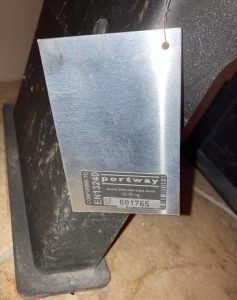
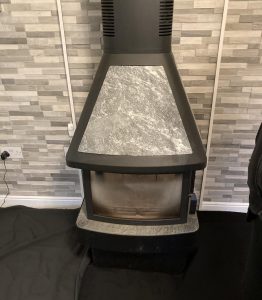
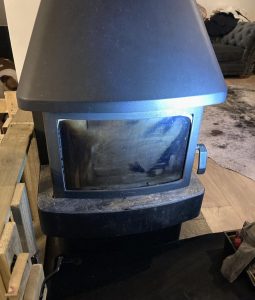


 My name is Paddy McKeown, I am a retired police officer (Detective Sergeant – Metropolitan Police), turned chimney sweep. I have completed training with ‘The Guild of Master Chimney Sweeps’, and Rod Tech UK (Power Sweeping).
My name is Paddy McKeown, I am a retired police officer (Detective Sergeant – Metropolitan Police), turned chimney sweep. I have completed training with ‘The Guild of Master Chimney Sweeps’, and Rod Tech UK (Power Sweeping).
